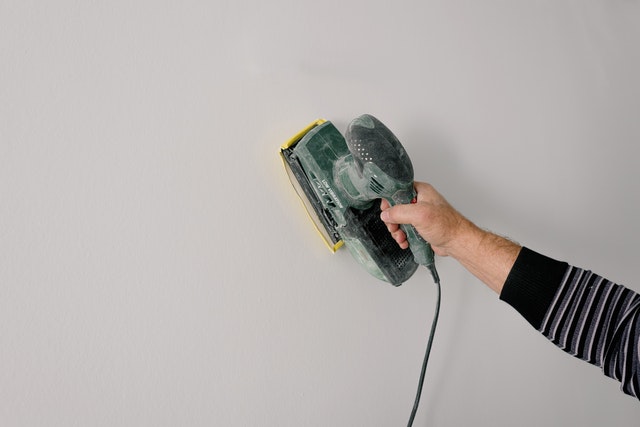Table of Contents
ToggleImportance Of Drywall Sanding
Possibly, your interior walls are made of drywall. You may choose to paint them or add tiles for decoration. Any idea is ideal for your home, but drywall installation should be conducted appropriately to get the best results from any of them. This includes proper drywall sanding. Otherwise, you will have problems painting and achieving the best look or have issues installing your tiles.
What Is Drywall sanding?
Contractors apply joint compounds to cover drywall cracks, angles, scratches, and any other imperfections during the drywall finishing process. When these imperfections get covered, they get uneven to the rest of the drywall. To achieve a desired and even level on the whole drywall, sanding is done on these parts. There are different types of sandpaper you can choose from to sand the scratches.
Types of drywall sanding
Dry sanding
Under this method, a sander (fine or grit) is used to smoothen the uneven areas caused by joint compound application on the drywall. Dry sanding is messy since it leaves too much dust behind. It also requires too much caution to ensure you do not damage the drywall surface. The secret is applying even pressure in circular motions.
This method is preferred when you are planning to paint your drywall after installation or repair. It gives a perfectly even surface for painting.
Tip: Always let the joint compound dry first before you begin dry drywall sanding.
Wet drywall sanding
Wet drywall sanding is much better in terms of cleanliness. It does not leave any dust behind, so you don’t have to worry about cleaning up the mess later.
However, when you compare the results of the two methods, dry drywall sanding produces better results.
This method is preferred if you want to cover the drywall later with tiles, so you don’t need perfect sanding compared to when you want to paint.
This method uses a special polyurethane sponge that looks like carpet padding to sand the drywall. But a simple piece of cloth can also do the job for you.
You just need to wet the sponge before squeezing excess water from it and begin sanding.
You should never prefer this method if you plan to apply a gloss or paint because the imperfection will be visible.
Prepare for drywall sanding and repair.
When your drywall is affected by holes, cracks, and other damages, you may need to perform drywall repair to eliminate the imperfections. When performing drywall repair, you will probably use a joint compound to cover the holes and cracks, creating imperfections on your drywall surface’s texture.
You must sand the repaired areas to smoothen and get rid of these imperfections. You can then apply paint for an ideal outcome.
Drywall sanding gives a perfect result when painting by removing imperfections and leveling the drywall surface after repair.
Are you looking for professional drywall services in Oakland?
Golden State Drywall Repair Pros will help you with drywall installation and repair in Oakland. Our professional team is just a call away from attending to your needs.
Call Us Today at (510) 250-5447 for inquiries


